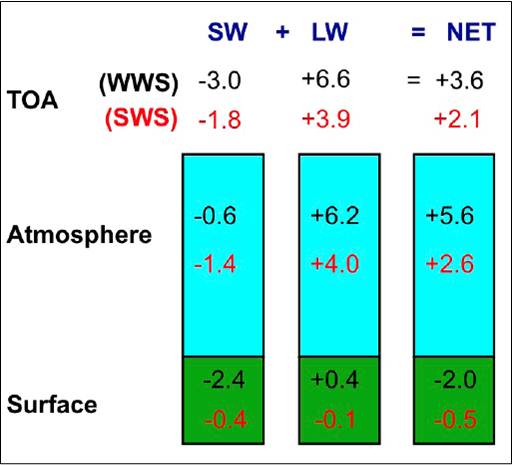Pollution + Storm Clouds = Warmer Atmosphere
Submitter:
Fan, Jiwen — Pacific Northwest National Laboratory
Area of research:
Cloud-Aerosol-Precipitation Interactions
Journal Reference:
Science
For the first time, DOE researchers at Pacific Northwest National Laboratory have shown that pollution increases warming in the atmosphere through enlarging thunderstorm clouds. The scientists conducted a computational study with resolutions high enough to allow the team to see the clouds develop. They found that for warm summer thunderstorms, pollution particles lead to stronger storms with larger, anvil-shaped clouds which also live longer.
Impact
Researchers used a high-resolution, cloud-resolving model to simulate two different types of storm systems at a regional scale: warm summer thunderstorms in southeastern China and cool, windy frontal systems in Oklahoma. They found that for the warm summer thunderstorms, pollution led to stronger storms with larger anvils, enhanced regional convergence and strong atmospheric warming. The sprintime frontal clouds did not have a similarly significan warming effect. Also, increasing the wind speed in the summer clouds dampened the aerosol invigoration and led to less warming. The warming effect dominated by trapping more heat, especially at night, even though the larger clouds also reflected more sunlight warmth back into space during the daytime.
Summary
Clouds are one of the most poorly understood components of the Earth’s climate system. The large amount of heat trapped by the pollution-enhanced clouds has the potential to impact regional circulation and modify weather systems, and current global climate models don’t represent these aerosol effects. Getting a better understanding of clouds, and how pollution and other particles affect their size and influence on the climate, is important to better predict the future of climate change.


